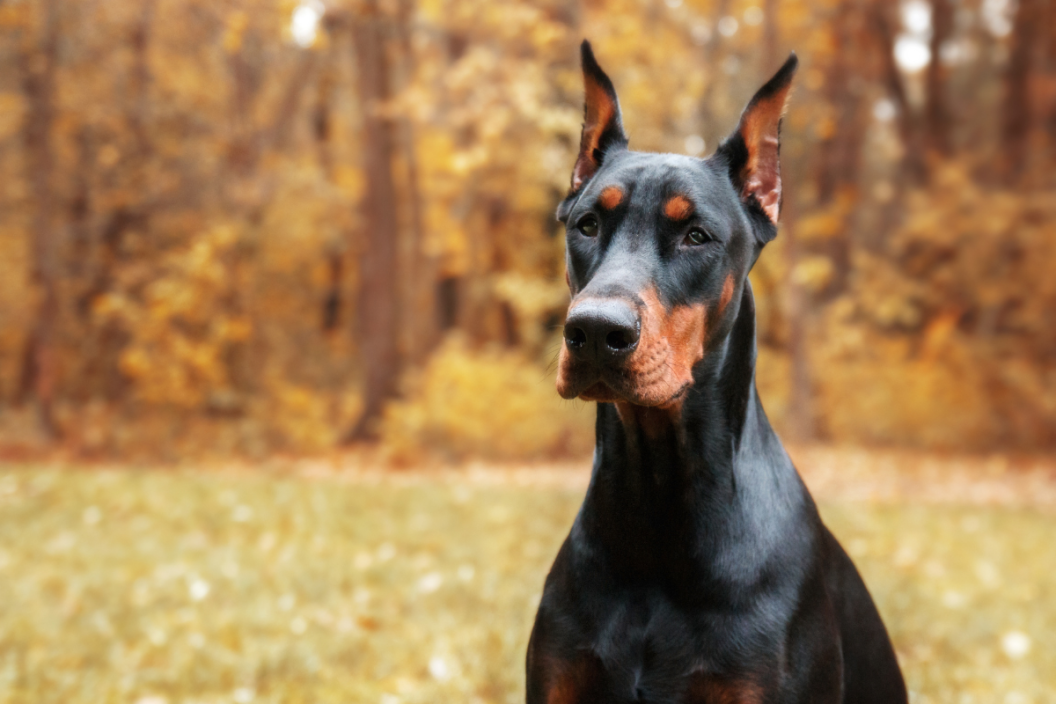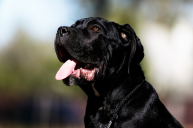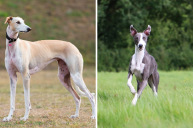Meet the Doberman Pinscher!
Are you thinking about adopting a Doberman pinscher puppy? This American Kennel Club (AKC) recognized popular breed of pinscher dog makes an excellent family dog and guard dog as long as their exercise needs and mental stimulation needs are met! Similar dogs include German pinscher, Rottweilers, Great Danes, Weimaraners, and Greyhounds. There's even a Doberman Pinscher Club of America, if you'd like to join others in celebrating these black and tan terriers! They have a life expectancy of between 10-12 years and are not prone to many health conditions. Read on to find out more about the Doberman dog breed!
History of Dobermans
https://www.instagram.com/p/CPsWGcxg9ut/
Louis Dobermann, a tax collector and breeder from Apolda, Germany, developed the Doberman pinscher in the 1880s. According to the DPCA, he sought to produce a new breed that would be especially useful as security dogs. There is no record of the breeds he employed explicitly, although it is "largely regarded as fact" that two German breeds played a significant role.
When he died in 1894, Germany called the breed he developed the Dobermann-pinscher in his honor, but the pinscher was omitted legally in the 1940s because, as the German term for terrier, it was judged to no longer be indicative of the breed, according to the DPCA. Following that, other nations followed suit, and today only North America refers to the dog as a Doberman pinscher, with the rest of the world just referring to the breed as a Doberman.
Doberman pinschers have a long history as military and police dogs in the early twentieth century. They adapt well to obedience training and flourish with plenty of exercise, making them excellent for police work or search and rescue operations. During World War II, the United States Marine Corps selected the Doberman as their official war dog. Cappie, one of these Dobies, saved the lives of 250 marines by informing them of the presence of Japanese forces on the island of Guam. Kurt, another fighting dog, was the first of 25 K-9 losses on Guam in July 1944.
Personality
https://www.instagram.com/p/CPxRJAcgMJb/
Many variables influence temperament, including inheritance, training, and socialization. Puppies with good temperaments are interested and lively, eager to approach and be held by people. It takes time for the Doberman dog breed to mature. They are still puppy-like until they are three or four years old.
Doberman Pinschers are super-intelligent dogs with a high energy levels. They're natural watchdogs who won't hesitate to act if they believe a family member is in danger, but they're not overly aggressive. The Dobie enjoys being active, so they are excellent working dogs. It's simple to teach them both physically and intellectually. The Dobe, like other dogs, requires early socialization—exposure to a variety of people, sights, noises, and experiences—when they are young. Socialization ensures that your Dobie puppy develops into a well-rounded family pet.
Appearance
https://www.instagram.com/p/CQ73KI6l2Ui/
RELATED: 15 Affectionate Dog Breeds Always Ready to Snuggle
Dobies are a big dog breed that stands more than 2 feet tall, with female Dobermans standing approximately 26 inches and male puppies closer to 28 inches. Males can weigh up to 100 pounds, although most Dobies weigh between 55 and 90 pounds. Dobies have short coats that are black, red, blue, or fawn. They have few grooming needs due to their short coats. Their slender bodies are nearly usually solid in color, with brown splashes across their eyes, muzzles, paws, and legs. Their gaze is dark and penetrating.
A Doberman's ears are relaxed from birth, and their tails may normally grow to reach around 12 inches long. A Doberman's tail, on the other hand, is docked, and his ears are clipped as well. Proponents claim that ear cropping aids his hearing and that docking his tail keeps it from becoming broken or injured as he works. However, both of these techniques are debatable because they have no demonstrated health advantages and might be unpleasant for the pup.
Health
https://www.instagram.com/p/CPyWFgkAGO6/
The typical Doberman lifespan is 10-12 years, although, like with many dog breeds, there are some health problems to be aware of. Dobermans can be prone to wobbler syndrome, which is a result of a cervical vertebral instability in the canine. Bloat, a gastrointestinal problem that can develop at any moment in a dog's life and has a 50% fatality risk, is also a significant worry for Dobermans. Hip dysplasia, dilated cardiomyopathy (enlarged heart), von Willebrand's disease (clotting problem), progressive retinal atrophy, albinism, and hypothyroidism are among genetic health issues that can afflict the breed. Fortunately, many Dobermans avoid issues of the thyroid and other health problems as long as purchased from a reputable breeder.
Love the Doberman dog breed? Tell us on the Wide Open Pets Facebook page!




